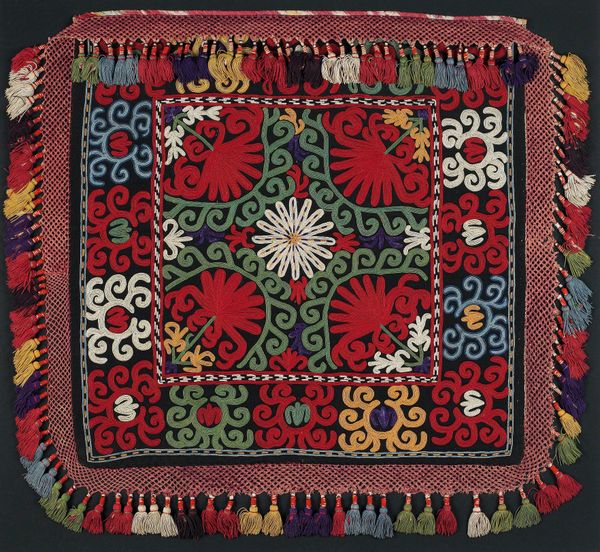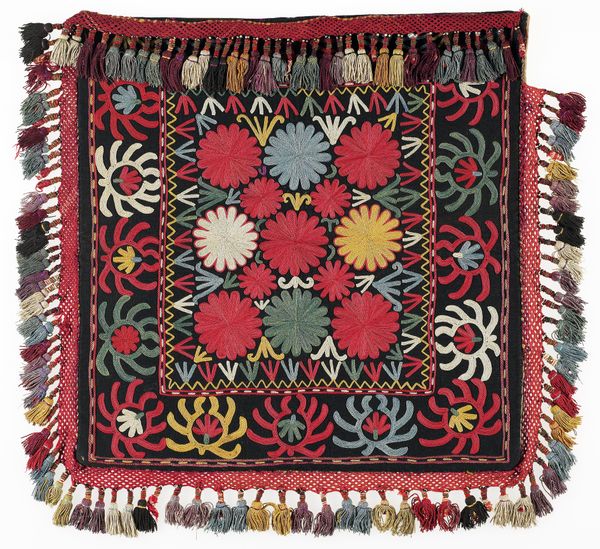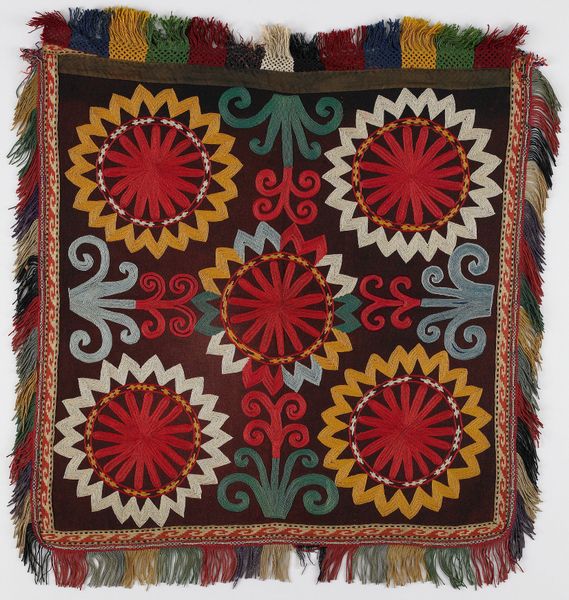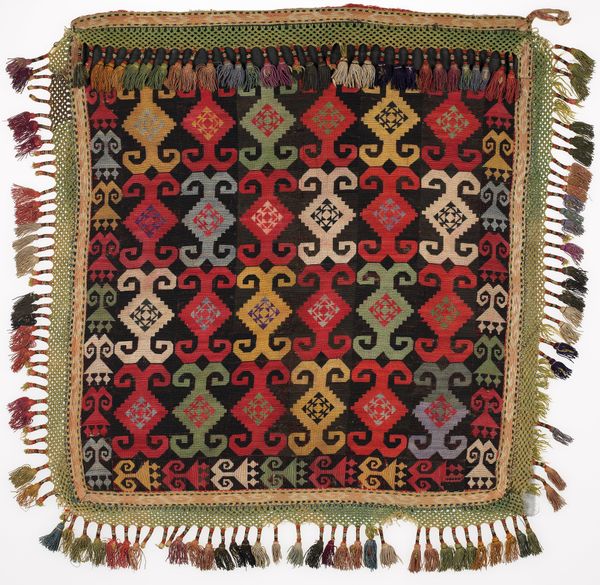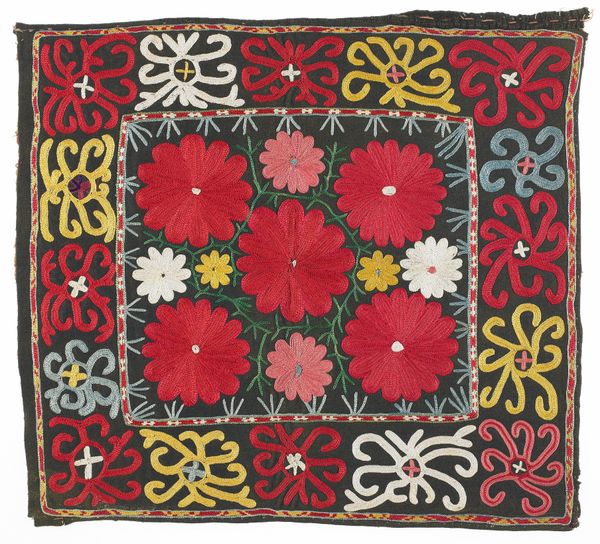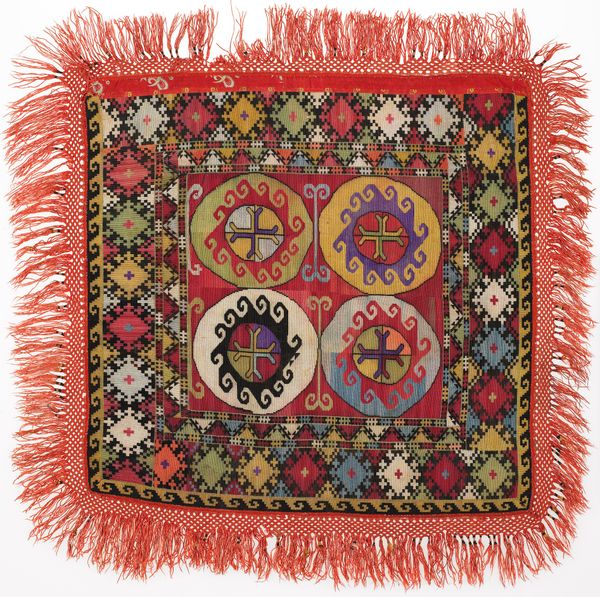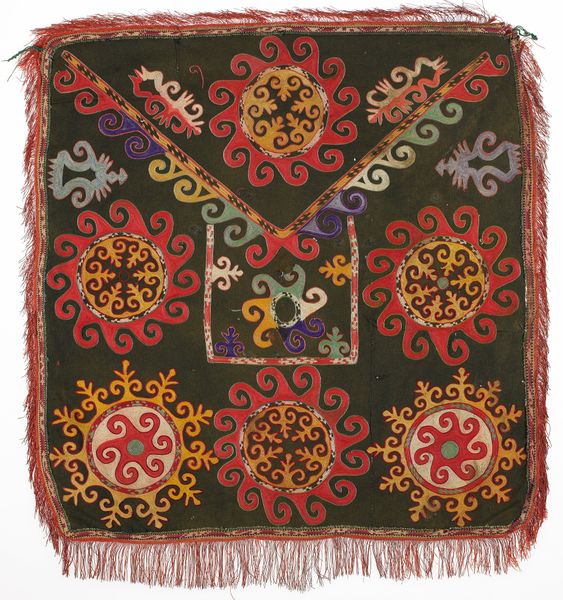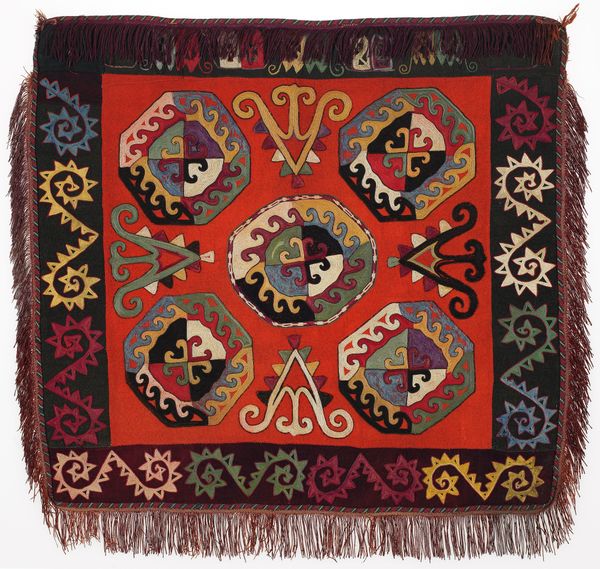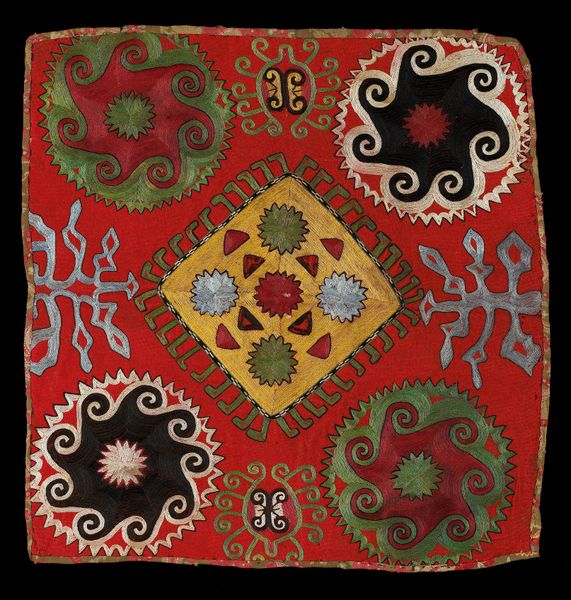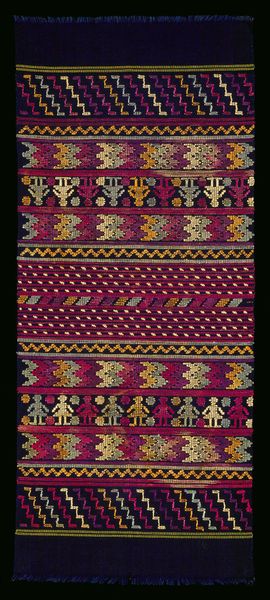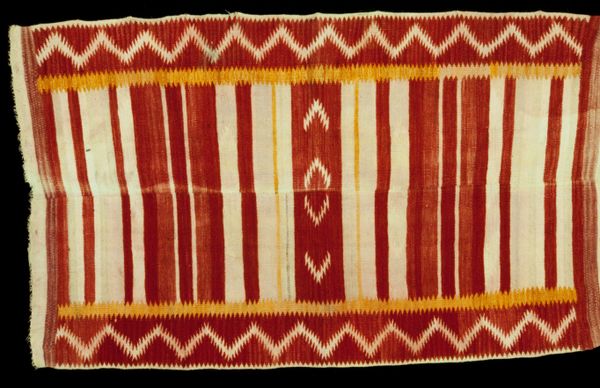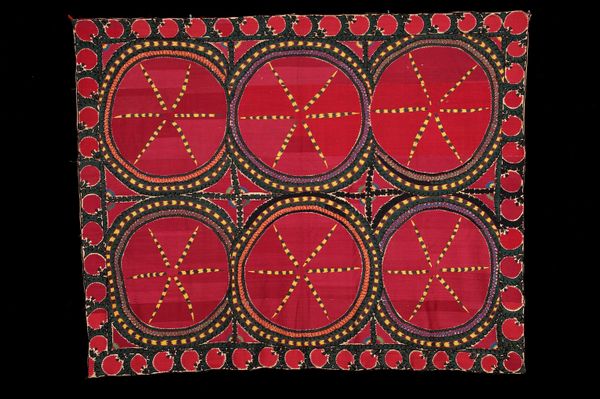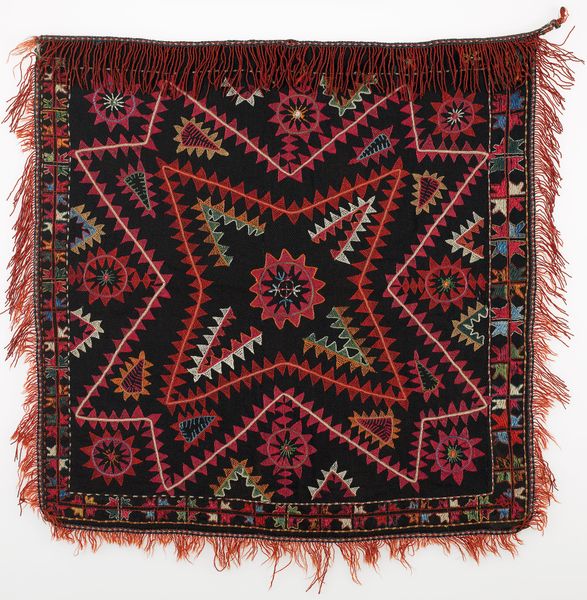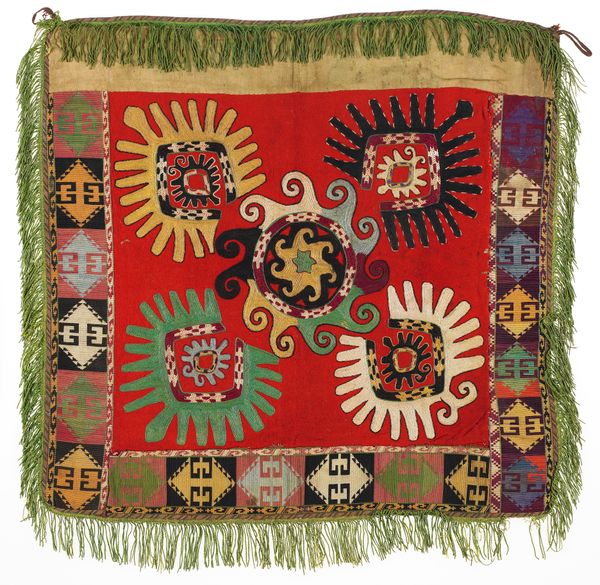
fibre-art, silk, textile
#
pattern heavy
#
fibre-art
#
silk
#
textile
#
fashion and textile design
#
geometric pattern
#
pattern design
#
geometric
#
repetition of pattern
#
regular pattern
#
pattern repetition
#
islamic-art
#
textile design
#
layered pattern
#
combined pattern
Dimensions: 30 1/4 x 28 1/2 in. (76.84 x 72.39 cm)
Copyright: Public Domain
Curator: Looking at this, I immediately think "cosy maximalism"—I'm drawn in by the vibrant colours and layered patterns, but also by its tactile qualities. Editor: Exactly. We are viewing an "Ilgich," an embroidery piece originating from Kungrat, dating back to around the 19th century, currently residing here at the Minneapolis Institute of Art. These textiles primarily use wool and silk to construct fascinating, symbolic art pieces. Curator: It certainly challenges our standard art categorizations. The use of fiber really shifts this from "art object" to "functional object". It’s hinting at labor practices and potentially domestic settings, far from any perceived white cube. Who made this? What was their relationship to the materials at hand? Editor: Indeed, the question of authorship and artistic intent is significant here. These Ilgich textiles held an essential socio-political role in society. Often, they signaled one's status or group belonging and were passed down through generations as important heirlooms or commodities in trade networks. Curator: You can see it too in the care put into its design: the precision of geometric patterns alongside softer elements like the paisley motifs that line the edge, along with those playful tassels. They speak to a skilled creator, and how such labor was valued and integrated within the community, and in contrast, devalued, because it does not stand on a museum pedestal in certain ways. Editor: And let’s consider the institutional aspect as well; objects like these can act as tangible connections to broader histories of colonialism and globalization, showcasing how artistic traditions have survived through complex socio-political landscapes. How did it get to Minneapolis, and how is it shown now? Curator: Precisely! Looking at something like this pushes you to look at the politics of taste; what has historically been given importance by Western Art History versus these textiles of symbolic and cultural capital—but perceived through completely different paradigms. Editor: These pieces continue to be appreciated by local communities today, highlighting that a museum doesn't simply preserve—it actively re-presents objects through changing cultural lenses. This makes us ask, what roles and narratives will "Ilgich" and similar artifacts adopt in the future public eye? Curator: All to say that what this piece prompts most of all, I think, is how to expand our concept of value, beyond the purely monetary and the Eurocentric, into how communities value material culture. Editor: A compelling point, and one that helps highlight how our dialogue, much like this "Ilgich," can become a collective venture in exploring layers of meaning that material objects can possess, in order to better understand societal contexts.
Comments
No comments
Be the first to comment and join the conversation on the ultimate creative platform.
